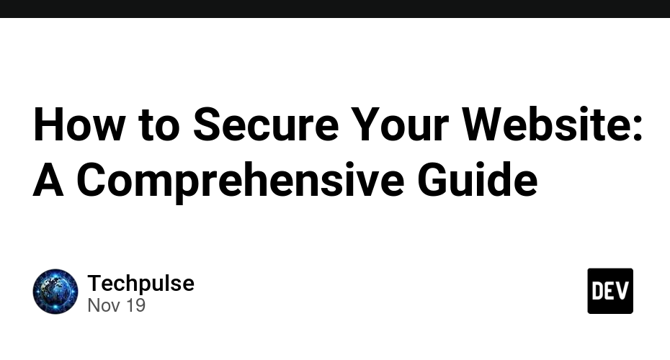Dev
1M
215

Image Credit: Dev
How to Secure Your Website: A Comprehensive Guide
- Securing your website is a necessity as a single vulnerability can lead to data breaches and other threats which can cause financial losses and damage to your reputation.
- This guide provides practical and actionable steps to secure your website, safeguarding it from potential cyber-attacks.
- Cyber threats such as malware, DDoS attacks, SQL Injection, phishing, weak passwords, and XSS are the main types you should watch for.
- Some actionable steps include adding HTTPS, using strong passwords, backing up your website regularly and limiting user access.
- If you have an e-commerce website, you should also ensure your website meets the Payment Card Industry Data Security Standards.
- Regular software updates and scans are non-negotiable for all types of websites because small websites are also targets
- Disconnecting immediately, scanning for malware, and restoring from backups are important steps if your website is hacked.
- Overall, cybersecurity is a continuous process that requires regular updates and monitoring.
- Make sure to implement necessary security measures and tools for your website and prioritize your website’s safety.
- Your website's security starts today. Begin by securing your website with HTTPS, updating its software, and backing up the website regularly.
Read Full Article
12 Likes
For uninterrupted reading, download the app